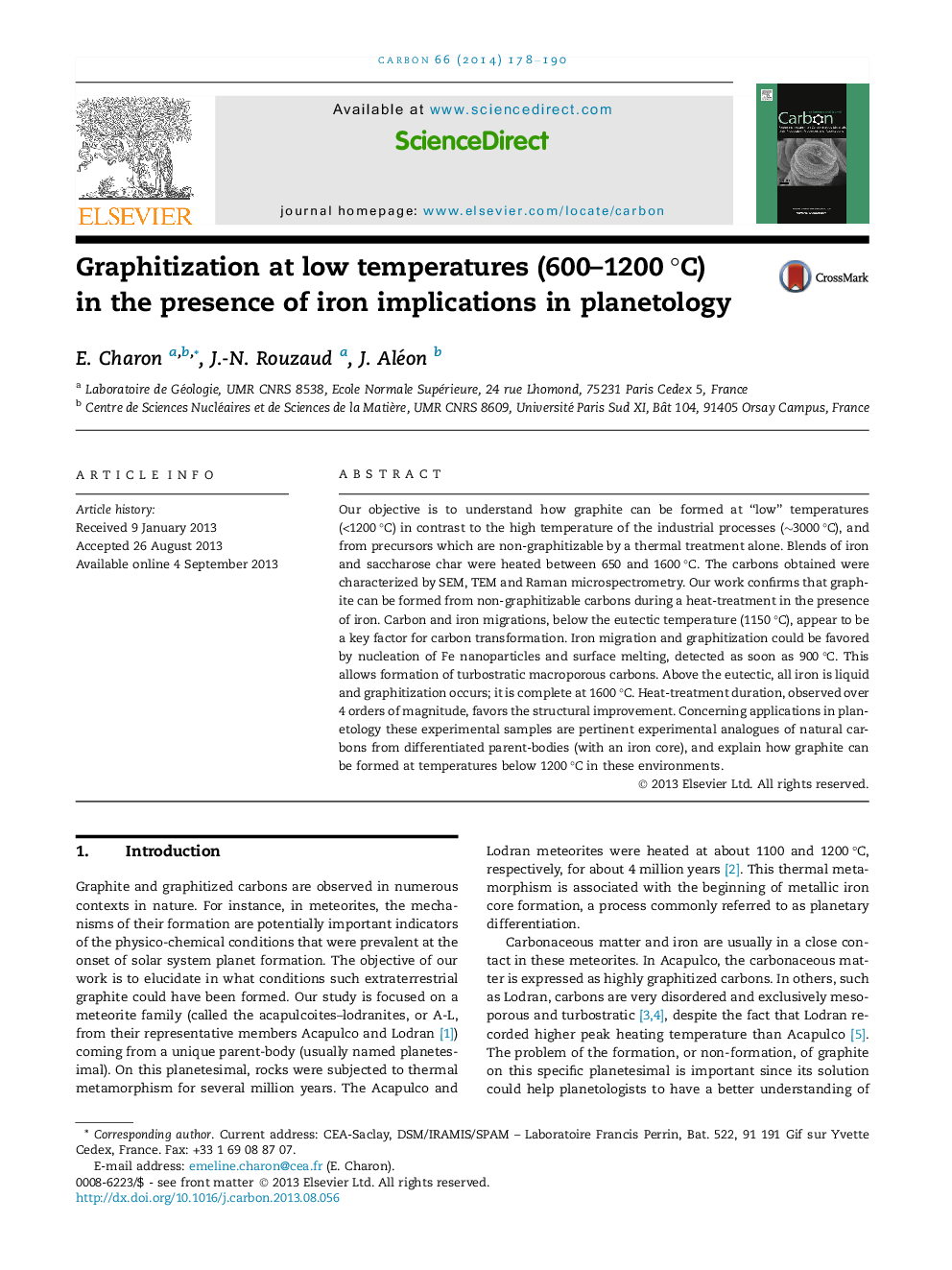| Article ID | Journal | Published Year | Pages | File Type |
|---|---|---|---|---|
| 7855321 | Carbon | 2014 | 13 Pages |
Abstract
Our objective is to understand how graphite can be formed at “low” temperatures (<1200 °C) in contrast to the high temperature of the industrial processes (â¼3000 °C), and from precursors which are non-graphitizable by a thermal treatment alone. Blends of iron and saccharose char were heated between 650 and 1600 °C. The carbons obtained were characterized by SEM, TEM and Raman microspectrometry. Our work confirms that graphite can be formed from non-graphitizable carbons during a heat-treatment in the presence of iron. Carbon and iron migrations, below the eutectic temperature (1150 °C), appear to be a key factor for carbon transformation. Iron migration and graphitization could be favored by nucleation of Fe nanoparticles and surface melting, detected as soon as 900 °C. This allows formation of turbostratic macroporous carbons. Above the eutectic, all iron is liquid and graphitization occurs; it is complete at 1600 °C. Heat-treatment duration, observed over 4 orders of magnitude, favors the structural improvement. Concerning applications in planetology these experimental samples are pertinent experimental analogues of natural carbons from differentiated parent-bodies (with an iron core), and explain how graphite can be formed at temperatures below 1200 °C in these environments.
Related Topics
Physical Sciences and Engineering
Energy
Energy (General)
Authors
E. Charon, J.-N. Rouzaud, J. Aléon,
